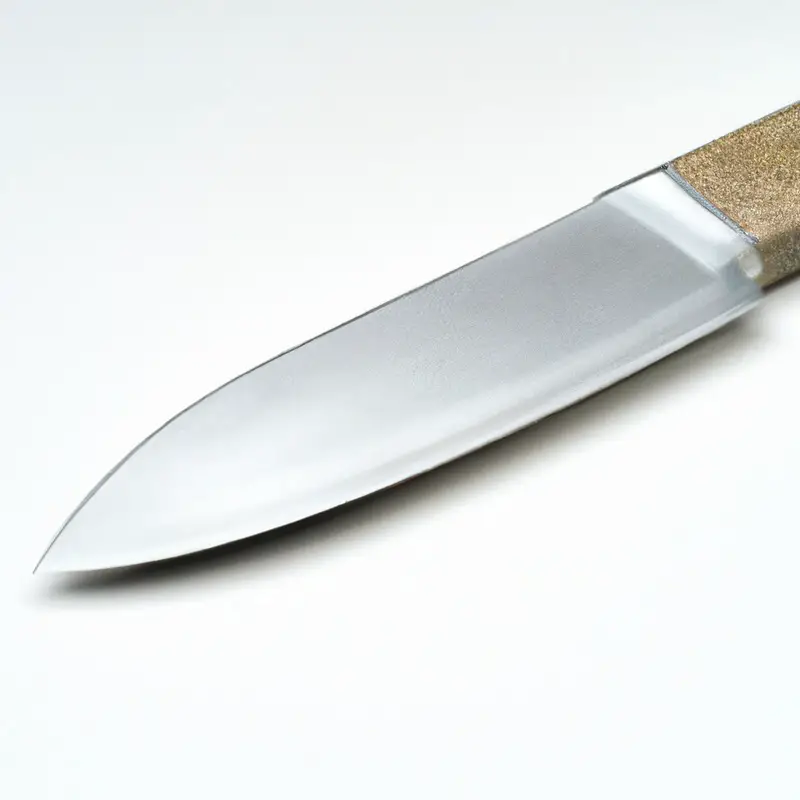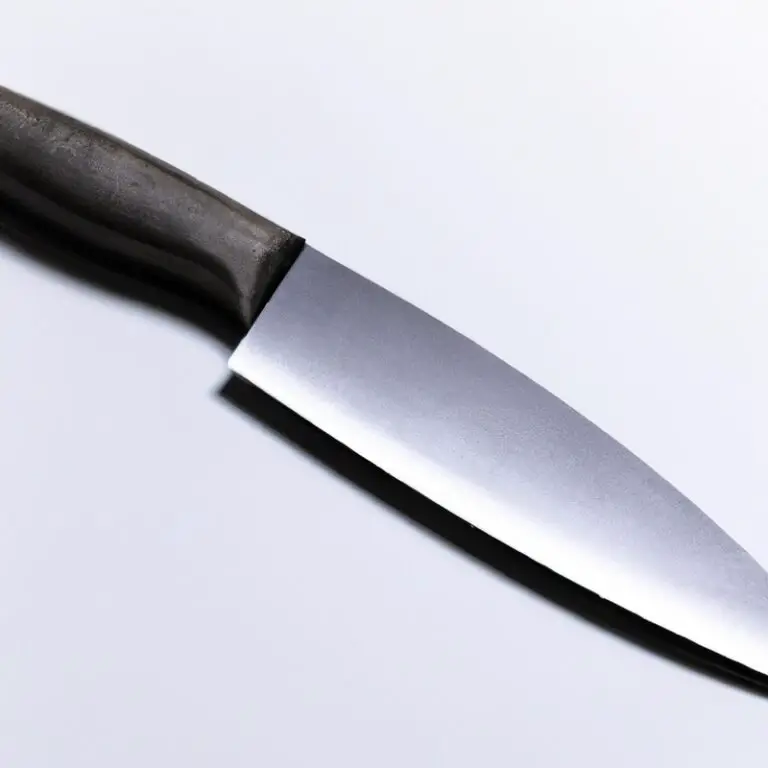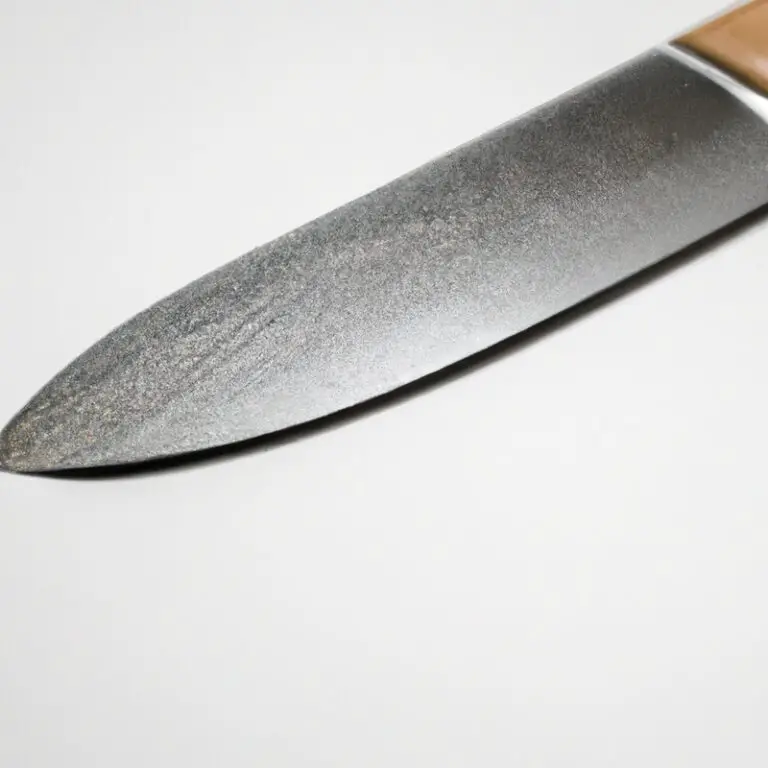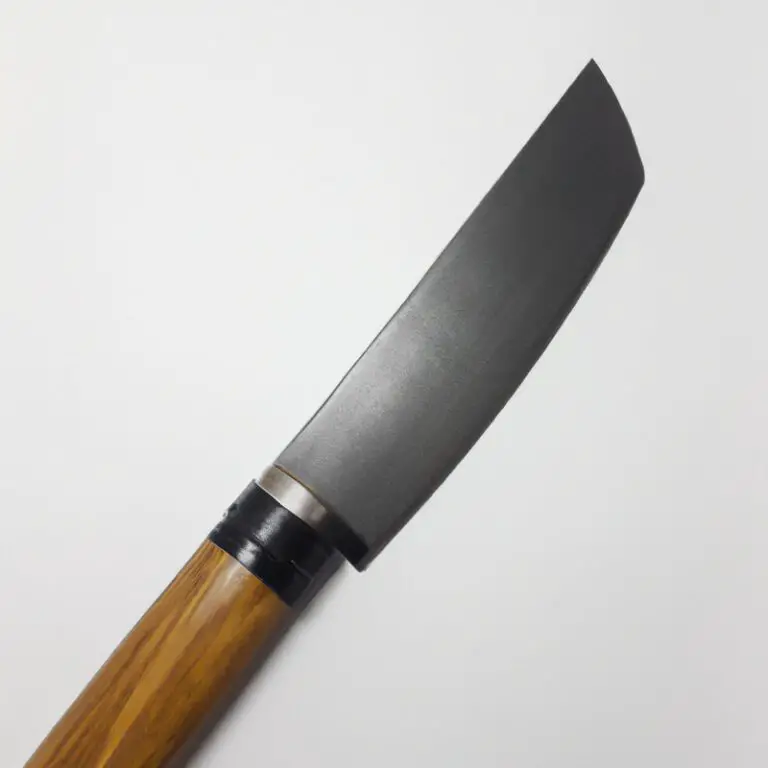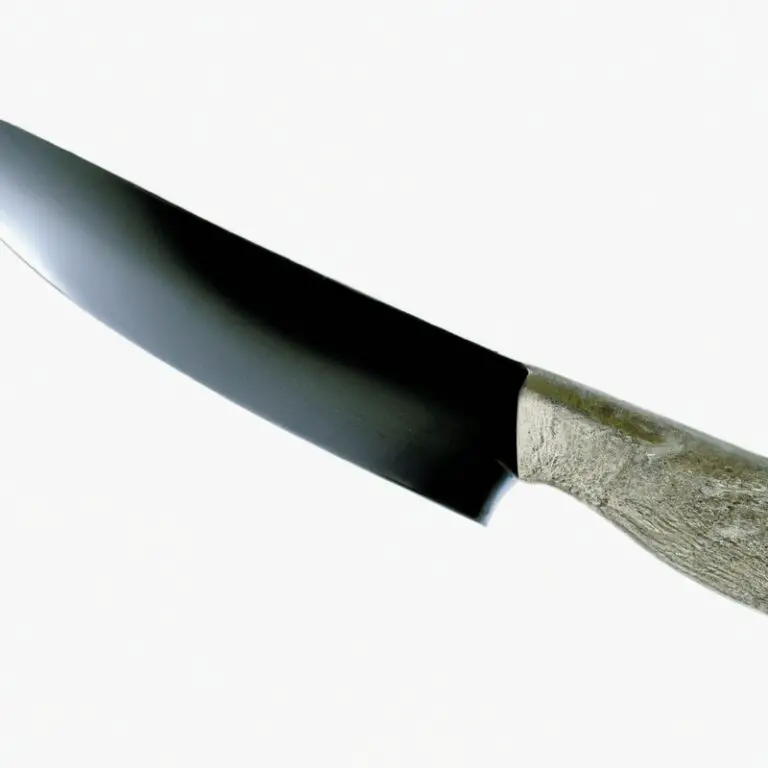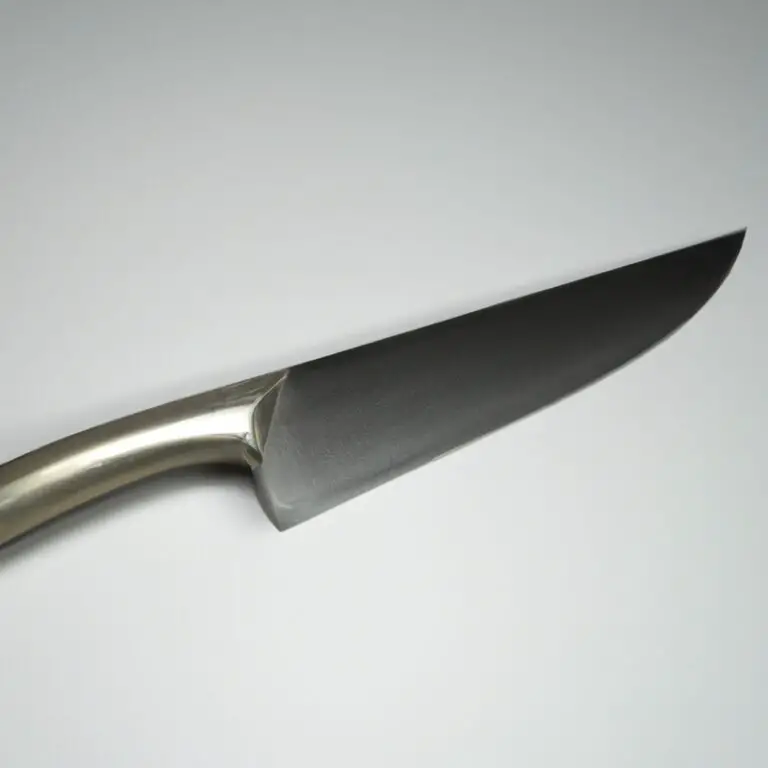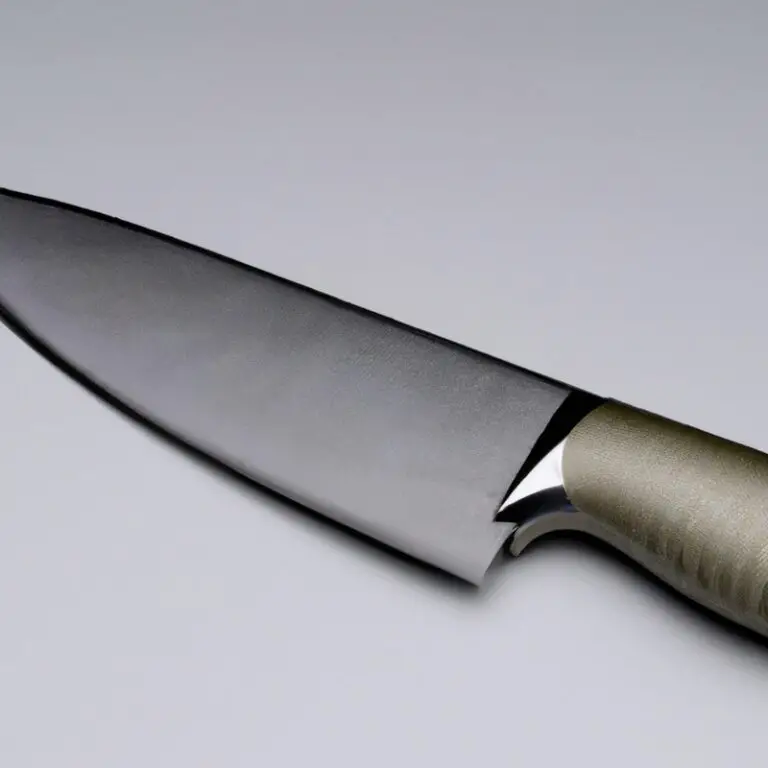What Are The Best Practices For Chopping Vegetables With a Gyuto Knife? Master The Technique!
Key Takeaways:
- Proper hand grip and finger placement are key to safely and efficiently chop vegetables with a Gyuto knife.
- Keep the knife blade sharp and use a slicing motion to cut through vegetables, avoiding sawing back and forth.
- Be mindful of the size and shape of the vegetables to maintain a consistent size and prevent injuries.
- Always prioritize safety by using a cutting board and keeping your non-dominant hand away from the blade’s path.
Have you ever struggled to chop vegetables with a dull, inefficient knife? Look no further than the Gyuto knife, a versatile and effective tool that can elevate your culinary skills.
But using a Gyuto knife requires more than just buying one; mastering the proper form, grip, and technique can make all the difference in achieving optimal cuts and enhancing the taste and texture of your dishes.
In this blog post, I’ll cover everything from choosing the right blade material to overcoming common vegetable chopping challenges, so you can create delicious, visually appealing meals with ease and precision.
| Step # | Description |
|---|---|
| 1 | Securely grip the knife handle with your dominant hand. |
| 2 | Pinch the blade with your other hand, using your thumb and index finger to hold the base of the blade. |
| 3 | Place the tip of the knife at the top of the vegetable and angle the blade slightly downwards. |
| 4 | Gently rock the blade in a forward and downward motion while at the same time moving the vegetable forward. |
| 5 | Repeat the forward and downward motion until the vegetable is diced or sliced to your desired size. |
Choosing the Right Gyuto Knife for the Job: Understanding Blade Material and Shape
Choosing the right Gyuto knife is crucial for efficient and safe vegetable chopping. Gyuto knives are made of different materials, but high-quality stainless steel is the most commonly used.
Damascus steel is another popular option, known for its durability and sharpness.
The blade shape is equally important, as it affects the knife’s functionality and comfort. A tall blade with a curved tip is best for rocking motion chopping, while a flatter blade is better suited for slicing.
A pointed tip allows for precise cuts, and a pronounced belly enhances dexterity.
It’s essential to consider the knife’s balance, weight, and grip comfort when choosing the right Gyuto knife for vegetable chopping. A well-balanced knife with a comfortable grip will reduce hand fatigue and prevent injury.
Understanding the blade material and shape is critical to choosing the right Gyuto knife for your specific vegetable chopping needs.
Safety First: Proper Handling Techniques to Avoid Injury while Chopping Vegetables
To ensure safe and efficient vegetable chopping, proper handling techniques are essential. Here are some tips to help you avoid injuries:
- Always grip the knife handle firmly with your dominant hand, and use your other hand to hold the vegetable steady.
- Keep your fingers curled under and away from the blade to avoid accidental cuts.
- Use a cutting board to protect your countertop and maintain stability while cutting.
- Keep the blade away from your body and use a slicing motion rather than a chopping motion to minimize the risk of injury.
- When finished, place the knife on a flat and secure surface, away from the edge of the counter to avoid accidental bumps or falls.
By following these techniques, you’ll be able to chop vegetables with a Gyuto knife safely and efficiently.
The Importance of Keeping a Sharp Edge on Your Gyuto Knife for Efficient and Safe Chopping
Keeping a sharp edge on your Gyuto knife is crucial for efficient and safe chopping. A dull knife will require more pressure and effort to make cuts, increasing the chances of slipping and injuring yourself.
A sharp knife, on the other hand, allows for smooth and precise cuts with minimal effort.
Additionally, a sharp blade helps maintain the integrity and texture of the ingredients, resulting in better flavor and presentation of the dish. Remember to sharpen your Gyuto knife frequently and properly to ensure optimal performance.
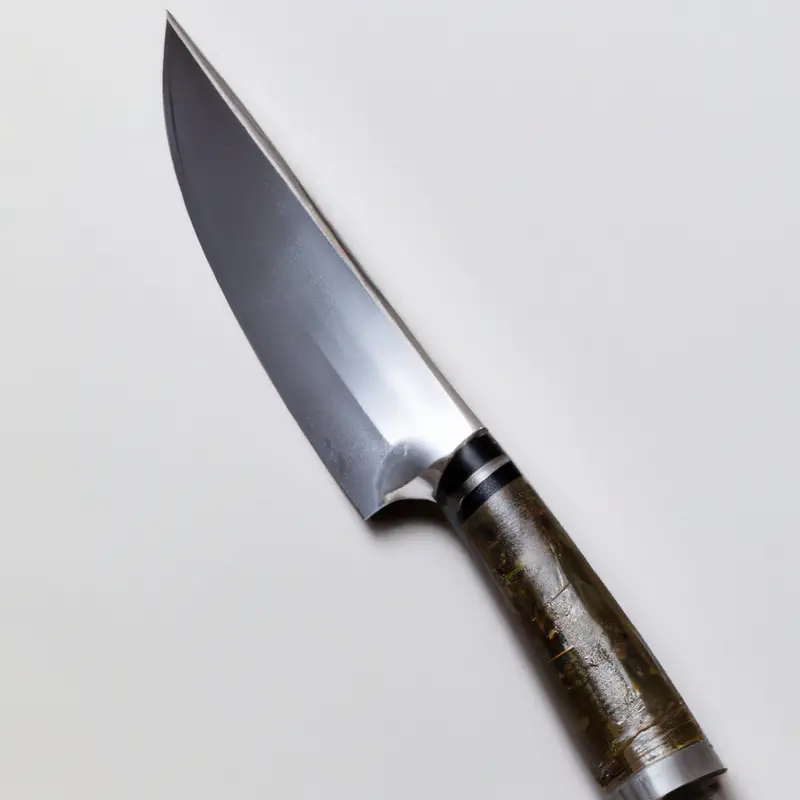
Getting the Perfect Cut: How to Sharpen Your Gyuto Knife for Optimal Performance
To ensure optimal performance while chopping vegetables, it is crucial to keep your Gyuto knife sharp. Here are some tips for getting the perfect cut:
- Use a sharpening stone – Start by soaking the stone in water for 10-15 minutes. Place it on a non-slip surface and hold the blade at a 15-degree angle. Run the blade back and forth across the stone, alternating sides.
- Hone the blade – A honing rod realigns the edge of the blade to maintain sharpness. Hold the rod at a 20-degree angle and slide the blade down the rod, alternating sides.
- Test the edge – Safely test the sharpness by running the blade through a piece of paper. If it cleanly slices through, you have a sharp edge.
- Repeat regularly – To maintain sharpness, it is recommended to sharpen your knife every 2-4 weeks with regular honing in between.
By regularly maintaining the sharpness of your Gyuto knife, you can ensure precision while chopping vegetables and avoid unnecessary strain or injury.
Mastering Basic Chopping Techniques: The Proper Form and Grip for Vegetables of Different Sizes
To master basic chopping techniques, the proper form and grip are crucial when using a Gyuto knife. For smaller vegetables like herbs, your grip should be closer to the blade’s tip, with your fingertips curled under the handle for better control.
For larger vegetables such as carrots or onions, hold the blade handle with all your fingers while gripping the vegetable with your other hand.
It’s essential to position your blade at the right angle and chop straight down to achieve consistent and even cuts. Remember to use your non-dominant hand to hold and stabilize the vegetable while keeping your fingertips tucked in.
When cutting large vegetables like cabbage or eggplant, it’s best to use a rocking motion to ensure that your blade covers all areas for a clean cut.
Always slice away from your body and avoid any sudden movements to prevent accidents. In summary, mastering chopping techniques requires proper form, grip, and a cautious approach.
Practicing with different vegetables will help you familiarize yourself with the techniques and improve your chopping skills.
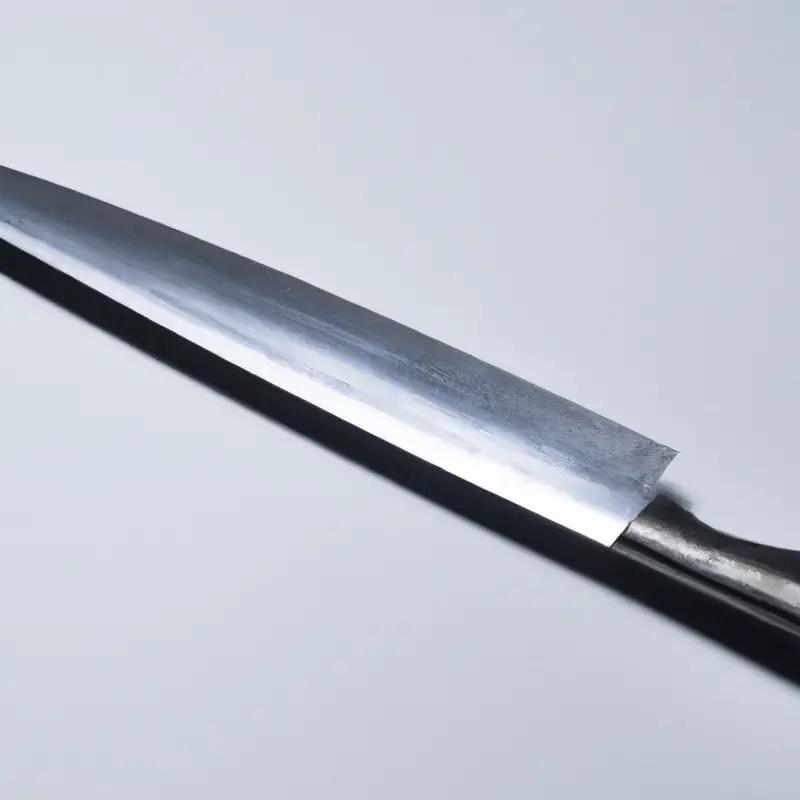
Overcoming Common Vegetable Chopping Challenges: Best Practices for Handling Slippery or Irregular Shapes
When it comes to handling slippery or irregular shaped vegetables, it can be challenging to get a clean and precise cut. However, there are a few best practices that can make vegetable chopping easier.
One way to handle slippery vegetables such as onions or tomatoes is by using the claw grip technique.
This involves curling your fingers under and using your knuckles to guide the blade while keeping your fingertips away from the blade’s edge. For irregular shaped vegetables like carrots or cucumbers, it’s essential to cut them into uniform shapes to ensure even cooking.
Start by cutting them in half lengthwise, and then cut them into uniform pieces from there.
Another method for handling irregular shapes is to create a flat surface by cutting a small slice off one side of the vegetable to stabilize it. This technique works well for round vegetables like onions, radishes, or turnips.
Remember to always use a sharp knife, especially when dealing with slippery or tough vegetables.
A dull blade can slip, making it more dangerous to use. By implementing these best practices, you can overcome common vegetable chopping challenges, making the process easier and safer.
Recording Your Progress: Tracking Your Improvement with Successful Cuts and Precise Measuring Techniques
Tracking your progress is essential when it comes to mastering the art of chopping vegetables with a Gyuto knife. Keeping a record of your cuts and measuring techniques helps you to identify your strengths and weaknesses and improve your skills gradually.
Consider maintaining a record of the following points while practicing your chopping techniques and measuring skills:
- The type and size of vegetables you are working with
- The direction of your cuts
- The thickness of your slices
- The time it takes for you to chop a specific amount of vegetables
By doing so, you can monitor your progress and gradually increase your speed and accuracy. Additionally, make sure to use precise measures when chopping and slicing vegetables.
Consider investing in a kitchen scale and a set of measuring cups and spoons to ensure you are cutting the exact amount of vegetables needed for the recipe.
Proper Maintenance of Your Gyuto Knife: Care and Storage Tips for Longevity and Performance
Proper maintenance is crucial to keep your Gyuto knife in tip-top shape. Here are some care and storage tips to ensure longevity and performance:
- Hand-wash your knife with warm, soapy water after each use, and dry it thoroughly.
- Avoid using abrasive materials or placing it in the dishwasher, as it can damage the blade.
- Oil your knife with food-grade mineral oil before storage to prevent rust and keep the blade lubricated.
- Store your knife in a designated spot away from other utensils to avoid damage or dulling.
- Sharpen your knife regularly, either with a sharpening stone or a honing rod, to maintain its sharpness.
By following these tips, you can ensure that your Gyuto knife stays in excellent condition and performs optimally for long.
Bringing the Flavors Out: How the Proper Cut Enhances the Taste and Texture of Your Vegetables
The proper cut of vegetables can significantly enhance their taste and texture. Using the right Gyuto knife and technique will not only increase your efficiency in the kitchen but also improve the flavor profile of your dishes.
Slicing vegetables in uniform thickness ensures even cooking and prevents uneven texture.
Rough, uneven cuts can lead to overcooking some sections while others remain undercooked. Additionally, precise cuts help to maintain the natural structure of the vegetable, which brings out its unique flavors.
So, take your time to practice and master different cutting techniques to get the most out of your vegetables.
Amplify your culinary skills by using a Gyuto knife to cut vegetables and enjoy creating delicious and healthy meals.
Elevating Your Culinary Skills: Recipe Ideas and Innovations for Chopping Vegetables with a Gyuto Knife
Elevating your culinary skills requires experimenting with different recipes and techniques. Here are some recipe ideas that you can try out with your Gyuto knife:
- Miso Soup: Gyuto knives are perfect for chopping small vegetables like scallions and mushrooms. Try making a savory miso soup using these ingredients.
- Stir-fry: Gyuto knives are great for slicing vegetables thinly and evenly. Experiment with different stir-fry recipes such as vegetable noodles or Mongolian stir-fry.
- Roasted Vegetables: Cut vegetables like butternut squash, sweet potatoes, and beets into even cubes with your Gyuto knife for effortless roasting.
- Salad: Slice lettuce, tomatoes, cucumbers, and other vegetables evenly to create a colorful salad with a beautiful presentation.
- Sushi: Gyuto knives are commonly used for preparing sushi and sashimi. Try your hand at making sushi rolls or sashimi at home with fresh vegetables and seafood.
Innovation is also key to elevating your culinary skills. Try new cutting techniques, experiment with unique flavor combinations, and find new ways to present your dishes.
With practice and creativity, your Gyuto knife can become a valuable tool for taking your culinary skills to the next level.
Final Verdict
Mastering the art of chopping vegetables with a Gyuto knife not only enhances your culinary skills but also ensures safety and efficiency in the kitchen. By understanding blade material and shape, proper handling techniques, and sharpening and maintenance tips, you can elevate your chopping game and achieve precision and consistency in your cuts.
With techniques for handling challenging vegetables, tracking progress, and recipe ideas, you can bring out the best in your ingredients and elevate your dishes to the next level.
Remember, investing in quality equipment and practicing good habits will not only improve your results but also ensure the longevity and performance of your Gyuto knife for years to come. With practice and dedication, you can master the art of vegetable chopping and take your cooking skills to new heights.

